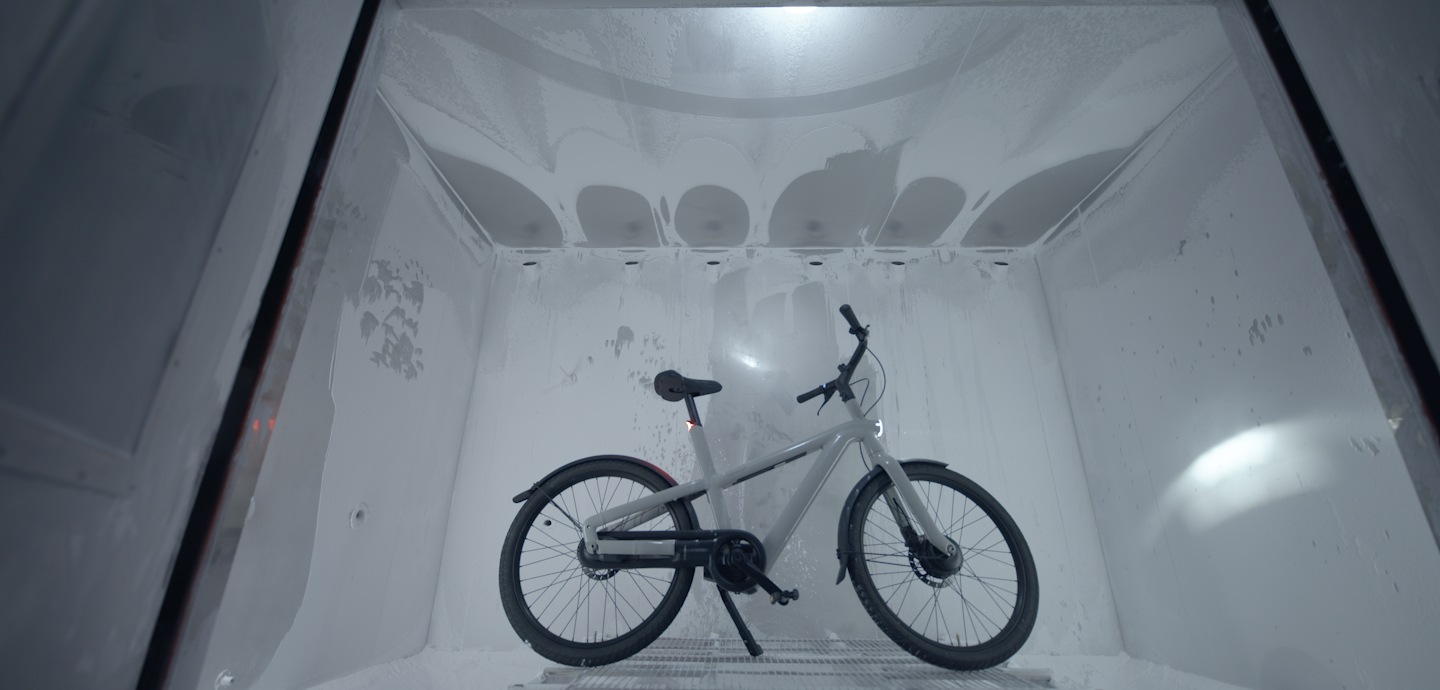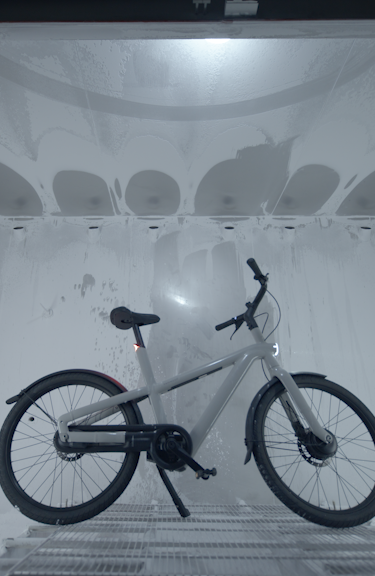This is how you'll roll


To make sure the electric components inside our bikes remain safe and dry whatever the weather, we subject them to 10.3 gallons of water every minute at extremely high water pressure. Think a tropical rainstorm, then think bigger.
10.3 gallons/min
2 hours
Imagine the Sahara Desert, but nearly twice as hot. That’s where we put the components of our bike for days on end. That way we know they can cope on the hottest day of the year, wherever in the world that may be.
158°F
72 hours
We place the bike frames – without any of the tech inside – in a freezing cold chamber for 72 hours. Once the ice has melted away, we test the frames to make sure they’re as strong as ever.
-40°F
72 hours
Some rides are short, others are long. Hours long. So our bikes are prepared for any length of journey, we run them over 200 km of uneven terrain. That’s Amsterdam to Brussels. Without stopping.
Terrain-tested
200 km
Sandstorm ahead or a dusty road on the horizon? To make sure airborne particles won’t affect the performance of our bikes, we lock them in a chamber and create our own confined storm that weathers on for 8 hours.
18.24 kg of dust
8 hours
From the bike rack to the busy city streets, our bikes need to be able to handle a little rough and tumble. That’s why we place our bikes at three different axes on a vibration plate and subject them to extreme shocks that go on for days.
3 axes
36 hours





